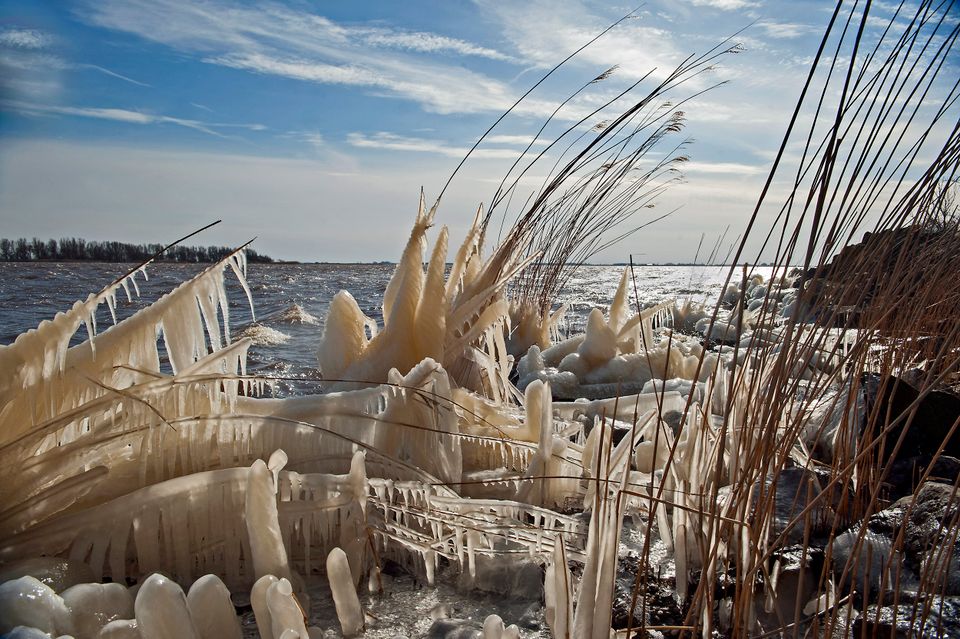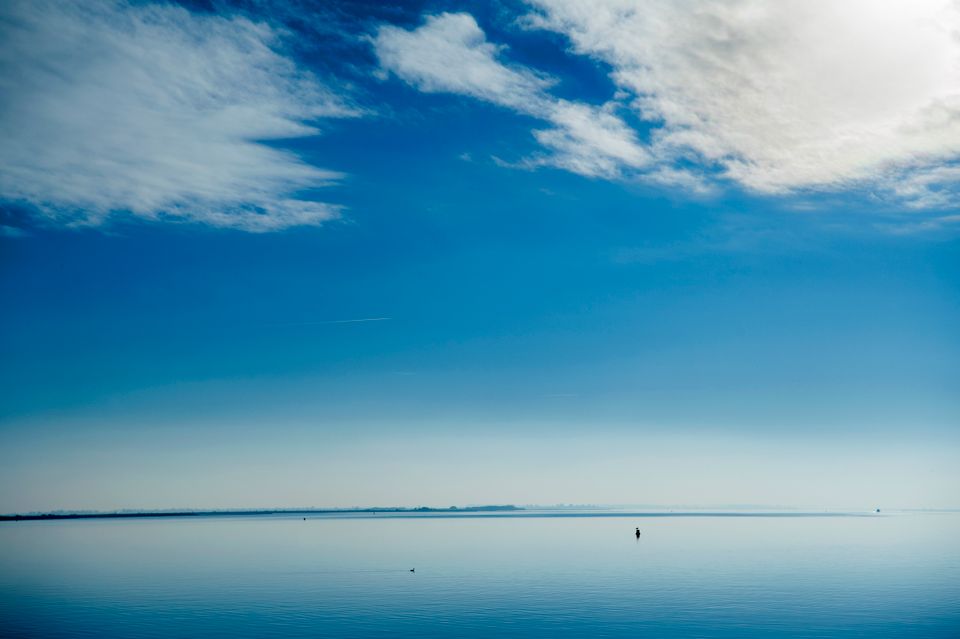Complex locks
Around the year 600 the estuary of the Lauwers widened. This was the beginning of the formation of the Lauwerszee Sea, which took several centuries. The dynamics of the Wadden Sea and a number of storm floods transformed the original gully into a sea.
Man assisted nature by extracting salt from the area, causing the seabed to sink and allowing the water to gain more terrain. From the 11th and 12th century onward dikes were constructed around the sea and halting its growth.
Many plans, no deeds
The closure of the Lauwerszee Sea also took centuries. The first plans were made as early as 1611. After that the idea kept popping up now and again and finally in 1849 the plan took on more definite forms. But it too was never executed. The difference in drainage level between Friesland and Groningen was a serious obstacle.
In the years preceding the Second World War the government attempted to close it off through an employment project, which was to be the answer to the financial crisis. Several plans were drawn up but not a single one of them was executed.
Deltaplan
The flood of 1953 - in which 1836 people in the Netherlands lost their lives - meant the battle for closure was won, though many, including many Zoutkamper fisherman who feared for their means of existence, were against it.
After the disaster of 1953 a national plan was drawn up to improve safety along the Dutch coastline which led to the Deltawet (Delta Law). There were two options for the Lauwerszee Sea: closure or higher dikes. The latter was cheaper and therefore preferred. This caused massive protests on the Frisian side of the Lauwerszee Sea. An action committee gathered 135,000 signatures in favour of closure and the government caved.
Precision work
In 1961 construction began on a 13 kilometre long dike. At the halfway point an island was constructed: Lauwersoog. After its opening in 1963 construction on the sluices could begin. These consist of twelve concrete pipes ten metres in diameter.
The lift lock followed in 1967 and after that construction of the dike began. The inhabitants of Groningen built the Groninger part and the inhabitants of Friesland built the Frisian part. Between the two dikes a gap of 900 metres remained open. This was closed in 1969 with so-called caissons, enormous concrete reservoirs that were submerged. Despite the size of the reservoirs this was absolute precision work.
Open locks
The new brackish area that was created around the Lauwersmeer lake is of great environmental value. But for migratory fish the dike between Groningen and Friesland has been a fiasco. The project Vissen voor Verbinding (fish for connection) was started to improve this. But until then the Noorderzijlvest water authority keeps the Clevering locks open longer at night to enable even the slower swimmers among the migratory fish to reach the fresh inland waters.
DISCOVER THE STORY WITH THIS ROUTE:
-
Water Heritage
Water Heritage

-
Wadden Coast Groningen
Wadden Coast Groningen



